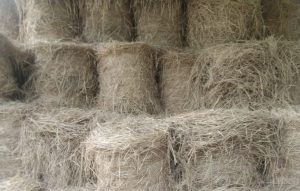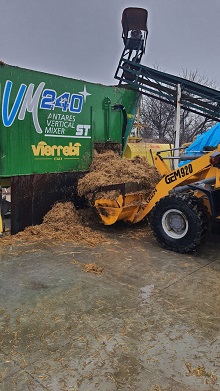I have an article detailing the raw materials used for substrates.
The question of which substrate is best for oyster mushrooms depends on many factors. I would like to note that my articles are mainly intended for those mushroom growers who grow oyster mushrooms for commercial purposes.
Therefore, there are practically no descriptions of simple and quick ways to prepare a hobby substrate.
The content of the article
The substrate mixture largely depends on the method of heat treatment.
When steaming raw materials in water (this method is called hydrothermy or hot water pasteurization), it is not recommended to experiment with multicomponent mixtures.
Each type of vegetable raw material needs a different steaming time. If you are making mixtures, one type of raw material may pick up too much moisture, while another will not have enough time for high-quality heat treatment.
For this reason, the mycelium overgrows with problems.
If you process raw materials by xerothermy (treatment of dry raw materials with steam) or pasteurization in a tunnel, the use of mixtures is welcome.
In this case, in addition to increasing the nutritional value of the composition, its physical structure also improves - this contributes to normal gas exchange in the mushroom block.
The nutritional value of the substrate is determined by the presence of both the main mineral elements and microelements.
In most cases, mushroom growers monitor only the nitrogen content, which should be at least 0.7 - 0.9. Although the successful assimilation of nutrients by the mycelium is also associated with the presence of a certain amount of phosphorus, the ratio of C/N content, and the presence of many trace elements.
If you only use one type of straw, the best one is the one that contains the most nitrogen.
 If you are composing raw materials for pasteurization in a tunnel, you need to take into account the various properties of the straw: crushability; springiness or, conversely, softness; presence of a wax layer; amount of nitrogen. In the article detailing the raw materials that I mentioned above, there is a description of the straw of various plants.
If you are composing raw materials for pasteurization in a tunnel, you need to take into account the various properties of the straw: crushability; springiness or, conversely, softness; presence of a wax layer; amount of nitrogen. In the article detailing the raw materials that I mentioned above, there is a description of the straw of various plants.
The best option for a multicomponent substrate is one that absorbs water well, is slightly springy for good gas exchange, but is dense enough so that the mycelial hyphae quickly occupy every piece of the substrate.
As a rule, they take 2-3 types of straw and some hay from local grass species (the exact amount of hay depends on its nitrogen content). If the region where you live has sunflower or cotton husks (after pressing the oil), you can use those for the mixture too.
All ingredients of the substrate can be divided into plant base, nutritional supplements and substances that increase the pH level. It is extremely rare that a plant base has the pH that is required.
Therefore, a solution of lime or soda ash (sodium carbonate) is added to the substrate to increase the pH.
Nutrient additives for the substrate must also be of plant origin. Such ingredients can be bran (for the sterile method of disinfecting raw materials) and hay (for all other methods). Read more about hay further in the article.
In some countries it is common to add gypsum. There it is believed that this may help regulate the humidity of the substrate.
In fact, plaster can absorb some water. But, in my opinion, it is easier to set up a method for disinfecting the substrate so that the substrate has optimal humidity, instead of using gypsum. After all, it is not needed for oyster mushrooms.
In addition, it is almost impossible to calculate how much it needs to be added to obtain the required humidity. The idea that gypsum will then be able to release water back into the substrate is a myth.
Try pouring water into plaster or alabaster and then taking the water away from them. 😉
Some articles say that gypsum increases the pH level in the substrate. However, he does not have such an ability. It is much more effective to use lime for this.
No, since even the same plant species that grows in different conditions can have different composition and C/N ratio.
Mixtures are made empirically. It is necessary to take into account the amount of nitrogen of each component and the hardness of the plant material.
For example, alfalfa straw is quite tough. It can be combined with soft barley straw. Hay is best used with wheat and rye straw.
The husk can be added to any composition, gradually increasing the percentage of its application and observing overgrowth and yield.
When I say "observing" I mean "recording the results of each batch of blocks."
When adding any additives, it is necessary to check how they affect the pH of the substrate. Some additives can raise or lower the pH level too much.
I also recommend adding any new additive to a small amount of substrate to check how the mycelium overgrows and how the oyster mushroom yield changes.
A solution of sugar and starch does not affect the yield of oyster mushrooms!
But these solutions are good breeding grounds for the green mold Trichoderma.
Please do not invent outlandish processing methods with additives!
Do not believe me - do experiments on a small part of the party.
Sign bags, compare yields. If at least one of the above will raise your harvest by at least a couple of percent, I congratulate you.
Various additives are added to the substrate in order to improve productivity. Experienced technologists often mix different types of raw materials to improve gas exchange in the block, but I mentioned this above.
What you can add to the mushroom substrate depends on how the raw materials are processed.
If you fill the substrate with hot water or disinfect the raw material with lime, any additives can cause mold spots to appear when the mycelium overgrows. You can try adding any legume hay, but not more than 10%.
However, I categorically do not recommend bran for such methods of processing raw materials.
Read about bran here
If you are growing mushrooms just as a hobby and making very little substrate, you can try pouring boiling water over a grain of wheat, barley, rice or millet and letting it sit until it cools. The container with grain should be well insulated; you can, for example, wrap it in a blanket so that the water cools slowly.
This cooled grain can be mixed with grain spawn and added to the substrate you are using. You determine the amount of grain yourself. Add 10% grain to one serving, 15% to another, and 20% to a third. And watch the yield.
Some hobbyists simply mix 5% mycelium with the grain and add nothing else.
However, these mushrooms will be too expensive, because grain is not cheap. In addition, such a substrate may deteriorate. If there are too many nutrients in it, the bacteria will occupy it before the mycelium.
Some articles suggest sawdust as a nutritional supplement. This is mistake! Sawdust and shavings contain very little nitrogen. Sawdust is used for substrates that are sterilized, but such mixtures are always supplemented with nutritional supplements that contain a lot of nitrogen. In such substrates, the balance of nutrients and physical properties is important.
When pasteurizing a substrate in a tunnel, the best additive is legume hay. It contains many nutrients and perfectly heats the raw materials in preparation for pasteurization.
The hyphae of oyster mushroom mycelium cannot break down fertilizers to obtain nutrients from them. However, some mushroom growers claim that yields have increased significantly after adding fertilizers. I don't know what to say about this. There is a scientific fact, on the one hand, and the assurances of mushroom growers on the other hand.
When I ask these people how they conducted the experiment, whether they had a control batch of blocks without fertilizers, it turns out that they did not.
Some fertilizers, such as urea, can heat the substrate. This property is used in some countries before pasteurizing the substrate in a tunnel.
Some fertilizers, such as urea, can heat the substrate.
This property is used in some countries before pasteurizing the substrate in a tunnel.
I would like to draw your attention to the fact that urea does NOT increase the level of nitrogen in the substrate that oyster mushroom mycelium can use! It is used only to heat the substrate (due to the activity of microorganisms that feed on it)

I read recommendations to take 1 kilogram of urea per ton of wet substrate. I think that's a lot.
I had such a case.
My clients had low yields, including due to uneven overgrowing of the substrate. When we eliminated other causes of this phenomenon, I suggested reducing the amount of urea.
Although they put only 0.5 kg per ton, and another of their consultants was against this decision. The raw materials were processed by tunnel pasteurization.
I suggested trying it once and reducing the amount of urea by half. With this reduced amount of urea, the substrate on the site warmed up to the same temperature.
Therefore, the owner decided to do all the following loads with a reduced amount of urea.
At the same time, the substrate was overgrown without spots, and the yield of oyster mushrooms increased.
